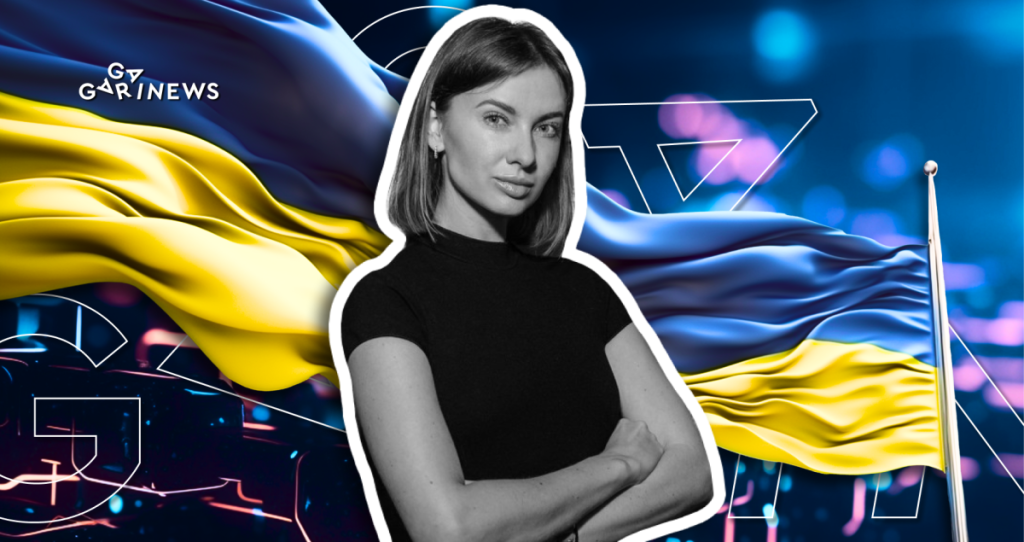Interview with Yulia Parkhomenko (Ukraine’s MDT)

We recently had the opportunity to connect with Yulia Parkhomenko, the Head of the Digital Economy Department at the Ministry of Digital Transformation, during the latest Incrypted Crypto Summit in Kyiv. The exchange provided a crucial insight into the Ministry’s stance on pressing crypto-related issues and the state of crypto adoption in Ukraine.
The Coinomist: Ms. Yulia, we are glad to meet you! As a crypto media outlet, we strive to promote the benefits of cryptocurrency and its potential. We're aware that the Ministry of Digital Transformation is also hard at work, trying to clarify the purpose of this technology and how it can be utilized. Could you shed some light on the strategies employed for this task?
Yulia Parkhomenko: For a country that aspires to become Europe's leading crypto hub in the foreseeable future, it's critical to cultivate an understanding of cryptocurrency among Ukrainians. As a result, in 2021, we collaborated with experts from Foresight “Virtual Assets 2030” to launch a private pilot project aimed at educating 30 chosen students about crypto literacy. The results were inspiring, motivating us to keep moving forward. Hence, in February 2023, we initiated a comprehensive educational program on crypto literacy and blockchain. Over 16,000 Ukrainians have already enrolled for the course, and we're receiving extremely positive feedback and high ratings from them. More than 95% of the ratings are “excellent” or “good”. Additionally, it's quite encouraging that more than 100 universities have expressed interest in introducing the Crypto Literacy and Blockchain Course as an elective subject.
Our aim with this project is to equip Ukrainians with the skills needed to use crypto assets effectively and to make informed decisions throughout their future investments.
The course covers 100 hours of instruction, both theoretical and practical. With the help of simulation-based exercises, students tackle specific cases using our partner platforms.
The Coinomist: We assume you've heard about the joint educational course offered by the Kyiv-Mohyla Academy and the WhiteBIT exchange?
Yulia Parkhomenko: Absolutely! We are all for, and wholeheartedly support, all educational initiatives spearheaded by crypto companies. After all, there is a pressing need to educate as many young blockchain specialists as possible.
The Coinomist: Ukraine has recently passed the foundational Law “On Virtual Assets”, which is now being updated in compliance with the European MiCA regulations. How is the process of revising the legislation going? And how active is the National Securities and Stock Market Commission in participating in this process?
Yulia Parkhomenko: According to the new revision of the Law “On Virtual Assets”, the National Securities and Stock Market Commission is the main regulator of the crypto industry in Ukraine, with the National Bank of Ukraine acting as a co-regulator. At present, the Ministry of Digital Transformation is aiding these new regulators by sharing our expertise within the Advisory Board that was established by the Commission.
The Commission has already published a draft of the proposed bill, which will be discussed in the Advisory Council in the coming weeks. Participants in the crypto industry will be able to review the legislative changes and provide their own feedback.
Regarding the European MiCA regulation, since Ukraine obtained candidate status for EU membership last year, we must begin to align our national legislation on virtual assets with European regulations to further integrate with European markets.
However, it is crucial to understand that MiCA will only be fully operational at the start of 2025. Therefore, in the Ministry of Digital Transformation, we consider it prudent to not wait for the complete rollout of the European framework for regulating crypto markets. Instead, we believe it is essential to implement simple and transparent regulations now to provide the crypto business with legal mechanisms for operations in Ukraine as soon as possible.
For this, we can consider the most important provisions of MiCA, and further implement those regulations that have proven their efficacy in practice. This will prevent excessive regulation at the inception stage of the crypto market, which could hinder its development in Ukraine.
The Coinomist: A question about the e-hryvnia. This instrument is currently in the implementation phase. What benefits, in your opinion, will it offer to the average user? And when will this project become a reality, allowing us to use the digital hryvnia?
Yulia Parkhomenko: Firstly, I must emphasize that the primary stakeholder of the digital hryvnia project—the e-hryvnia—is the National Bank of Ukraine. Hence, only representatives of the NBU can provide detailed comments about the future concept of the e-hryvnia, including the technology that will be utilized for this project—DLT or blockchain. The formulation of the e-hryvnia concept is currently ongoing.
Discussing potential use cases for the e-hryvnia is also premature at this point. The kind and extent of possible use cases will depend on the platform on which the e-hryvnia will be implemented. If the chosen technology allows the use of smart contracts, it could significantly expand the potential avenues of its application.
For Ukrainians, the e-hryvnia could provide a convenient means for paying taxes, fines, and receiving state subsidies.
The digital form of the hryvnia could substantially reduce transaction costs for the state and business, lower the risk of losing funds due to bank insolvencies, and thereby uphold macroeconomic and financial stability.
The e-hryvnia could facilitate the tracking of the flow of state funds, partially contributing to a reduction in corruption levels. Therefore, the e-hryvnia could also promote the reduction of economy shadowing. And de-shadowing could increase tax revenues from all sectors of the economy.
Smart contract technology allows us to make money “intelligent” by programming its direction and order of use. Money can be “programmed-targeted”, directed towards funding specific state objectives such as road construction, support for rail transport, and other infrastructure projects. As these “smart” contracts will be publicly accessible, we can verify their circulation.
The Coinomist: What is the primary benefit of using e-hryvnia, as opposed to a standard contactless card, which is already a digitized product?
Yulia Parkhomenko: Using e-hryvnia liberates the user from reliance on a commercial bank. This leads to cheaper commissions and faster transactions. The possibility of employing smart contract technology is also an important feature to consider.
The Coinomist: Since March 2nd, Ukrainian cryptocurrency holders have been unable to withdraw funds in fiat on exchanges. This is due to a NBU ban. Is there any insight into why the NBU has taken this action, and is anything being done to ease the situation for regular users and allow fiat withdrawals?
Yulia Parkhomenko: Naturally, these steps were expected from the NBU, considering the ongoing war in our country and their role in ensuring hryvnia stability. To some extent, this action is reasonable. However, such restrictions limit crypto users from withdrawing or replenishing their accounts in a conventional manner.
We have approached the NBU and already organized a substantial number of working meetings, involving representatives from payment systems and cryptocurrency exchanges, to find mechanisms that could address the ongoing issue. Discussions are still in progress. Unfortunately, the final decision is not in our hands, but we are committed to making maximum efforts.
Our legal team is exploring and contemplating mechanisms that could prove effective, but the final decision rests with the National Bank. This situation clearly illustrates the problems that arise in the absence of crypto asset regulation.
The Coinomist: Currently, there is substantial support being offered from abroad in the form of cryptocurrency. However, we're also aware of instances where crypto is used to fund Russia in the ongoing war. How is this being managed by the Ministry of Digital Transformation? Are there attempts to communicate with crypto exchanges and companies to block such transfers and halt financial support to Russia's military invasion?
Yulia Parkhomenko: During the early days of the full-scale war, the Ministry of Digital Transformation asked leading entities to cease servicing Russian citizens. Some exchanges originating from Ukraine implemented these restrictions even without our request. Regarding the tracking of transactions, we continue to engage with analytical blockchain companies, who keep us informed about transfers to crypto wallets that are funding the war against Ukraine. We then pass this information to law enforcement agencies, who approach the crypto exchanges to legally block these assets, if proven.
The content on The Coinomist is for informational purposes only and should not be interpreted as financial advice. While we strive to provide accurate and up-to-date information, we do not guarantee the accuracy, completeness, or reliability of any content. Neither we accept liability for any errors or omissions in the information provided or for any financial losses incurred as a result of relying on this information. Actions based on this content are at your own risk. Always do your own research and consult a professional. See our Terms, Privacy Policy, and Disclaimers for more details.



























